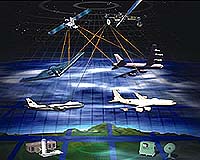 |
Palo Alto CA (SPX) Dec 17, 2010 The Lockheed Martin team, awarded a contract by NASA in 2009 to design and build the agency's next Small Explorer Mission (SMEX) called the Interface Region Imaging Spectrograph (IRIS), has met the requirements of a Critical Design Review. The review was conducted last week at the Lockheed Martin Space Systems Advanced Technology Center (ATC) in Palo Alto by a group of multi-disciplinary experts from NASA, as well as a number of independent reviewers. "It is enormously satisfying to have passed this crucial milestone, and we look forward to construction and test of this important instrument," said Dr. Alan Title, IRIS principal investigator and solar physicist at the ATC Solar and Astrophysics Laboratory in Palo Alto. "With IRIS we have a unique opportunity to provide significant missing pieces in our understanding of energy transport on the Sun. The complex processes and enormous contrasts of density, temperature and magnetic field within this interface region require instrument and modeling capabilities that are now finally within our reach." IRIS fills a crucial gap in our ability to advance Sun-Earth connection studies by tracing the flow of energy and plasma through a dynamic interface region - the chromosphere and transition region - between the solar surface and the solar corona. Here all but a few percent of the non-radiative energy leaving the Sun is converted to heat and radiation. The remaining few percent create the corona and solar wind. Magnetic fields and plasma exert comparable forces in this region, and IRIS is uniquely suited to provide the observations necessary to pinpoint the physical forces at work in this little understood piece of real estate near the surface of the Sun. The IRIS instrument will be built at the ATC. The IRIS spacecraft is being developed for the ATC by the company's Sensing and Exploration Systems organization. In addition, mission operations and some system engineering will be the responsibility of NASA Ames in Mountain View, Calif. Mission costs will be capped at $105 million, excluding the launch vehicle. The NASA Goddard Space Flight Center in Greenbelt, Md., manages the IRIS project. The IRIS spacecraft will fly in a Sun-synchronous polar orbit for continuous solar observations on a two-year mission. It will obtain ultraviolet spectra and images with high resolution (1/3 arcsec) - with a cadence of as little as one second apart - focused on the chromosphere and the transition region. Spectra will cover temperatures from 4,500 K to 107 K, and images covering temperatures from 4,500 to 65,000 K. The NASA SMEX Program is designed to provide frequent, low-cost access to space for heliophysics and astrophysics missions using small to mid-sized spacecraft. The program also seeks to raise public awareness of NASA's space science missions through educational and public outreach activities. The Solar and Astrophysics Laboratory at the ATC conducts basic research into understanding and predicting space weather and the behavior of our Sun including its impacts on Earth and climate. It has a 47-year-long heritage of spaceborne solar instruments including the Soft X-ray Telescope on the Japanese Yohkoh satellite, the Michelson Doppler Imager on the ESA/NASA Solar and Heliospheric Observatory, the solar telescope on NASA's Transition Region and Coronal Explorer, the Focal Plane Package on the Japanese Hinode satellite, the Solar X-ray Imagers on GOES-N, -O and -P, the Extreme Ultraviolet Imager instruments on NASA's twin STEREO spacecraft, and the Heliospheric and Magnetic Imager and the Atmospheric Imaging Assembly on NASA's Solar Dynamics Observatory. The ATC is the research and development organization of Lockheed Martin Space Systems Company (LMSSC). LMSSC, a major operating unit of Lockheed Martin Corporation, designs and develops, tests, manufactures and operates a full spectrum of advanced-technology systems for national security and military, civil government and commercial customers. Chief products include human space flight systems; a full range of remote sensing, navigation, meteorological and communications satellites and instruments; space observatories and interplanetary spacecraft; laser radar; ballistic missiles; missile defense systems; and nanotechnology research and development.
Share This Article With Planet Earth
Related Links Small Explorer Mission (SMEX) Space Technology News - Applications and Research
 Boeing Completes Intersegment Testing Of FAB-T Satellite Comms System
Boeing Completes Intersegment Testing Of FAB-T Satellite Comms SystemHuntington Beach CA (SPX) Dec 06, 2010 Boeing has announced that the company and the U.S. Air Force recently completed intersegment tests of communications between a Family of Advanced Beyond Line-of-Sight Terminal (FAB-T) and an Advanced Extremely High Frequency (AEHF) satellite vehicle (SV2) payload. The tests demonstrated the ability of the FAB-T Nuclear Command and Control Network Communications System (NC2NCS) to communica ... read more |
|
| The content herein, unless otherwise known to be public domain, are Copyright 1995-2010 - SpaceDaily. AFP and UPI Wire Stories are copyright Agence France-Presse and United Press International. ESA Portal Reports are copyright European Space Agency. All NASA sourced material is public domain. Additional copyrights may apply in whole or part to other bona fide parties. Advertising does not imply endorsement,agreement or approval of any opinions, statements or information provided by SpaceDaily on any Web page published or hosted by SpaceDaily. Privacy Statement |